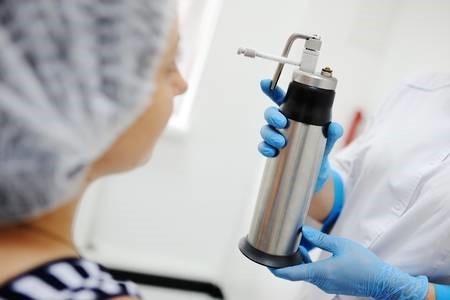What is Cryotherapy
Cryotherapy uses liquid nitrogen at 196℃ below zero to freeze the cells in the lesion and achieve the therapeutic effect.
Indications for Cryotherapy
Common diseases such as viral warts, solar keratosis, prurigo nodularis, keloid, porokeratosis, and superficial skin malignant tumors.
Cryotherapy Process
Individual lesions can be treated in minutes at a time. Course of treatment: some lesions need only be treated once or twice to heal, while others need to be treated many times. Each cryotherapy should be performed at least 1 week (7 days) apart, and the patient should continue to be treated until cured.

Possible Symptoms
After cryotherapy, there may be blisters and local pain in the lesion, and slight pigmentation (occasionally), slight hair removal or depigmentation (rarely). These are all normal reactions that may occur.
Precautions
If blisters form in the affected area, please do not break them, lest the wound be infected and inflamed by dirty water and other unclean things. After about 2 to 3 weeks, the blister fluid will be absorbed and the damaged skin will peel off. If blisters are large enough to affect daily life, please register at the clinic. Doctors will drain blisters and disinfect them for you. Patients will be asked to disinfect and dress wounds with iodine or antibiotic ointment every day to avoid bacterial infection. If there is no blister in the affected area, you can take a bath as usual.
Cryotherapy can be performed with a cryo-gun or cotton swab.
When cryotherapy is performed, the lesion becomes white and painful.
Blisters are a common complication and should be treated according to general wound care principles.

